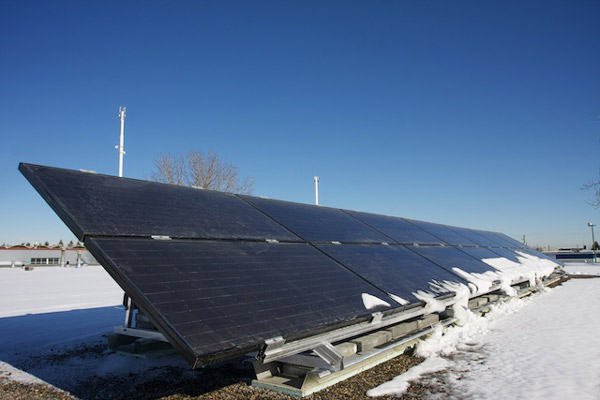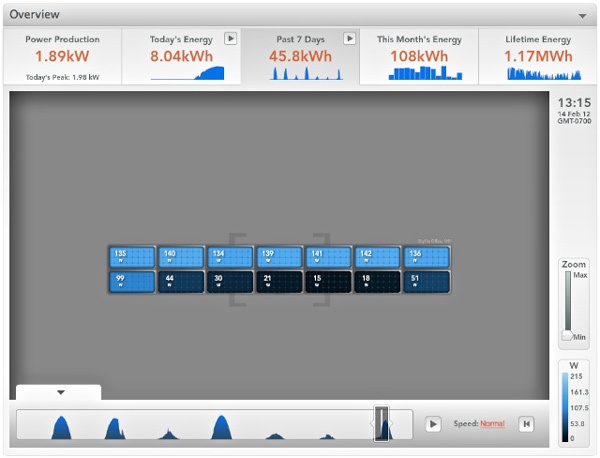Canadian winters are synonymous with snow so it is important that consideration be given for the effects of snow on winter and year round energy production from solar electric and solar thermal systems. Although clearing the snow from a solar array can help you squeeze a few more kiloWatt-hours (kWh) from your solar PV system, this blog entry will hopefully prove to you that this isn’t worth the hassle or the risk! We do not recommend that any of our customers get up on their roof to clear the solar modules (panels) of snow during the winter months – this is extremely dangerous and not necessary.
With a grid-connected solar electric system, the total annual energy production from the system is most important. The majority of the energy produced by a solar electric system in Canada is produced from March to October. Lost energy production due to snow during the darker months of November to February is not as important.
With all that said, solar electric and solar thermal systems will actually clear themselves of snow! There are a number of factors that affect when and how quickly this will happen such as:
- ambient temperature – the warmer the better
- amount of sunlight (insolation) – the snow isn’t usually cleared on a cloudy day but the energy production from a cloudy winters day is negligible anyways
- angle and orientation of the solar array – the steeper the angle, the quicker the snow clears; facing directly South or slightly West of South helps with snow clearing
- solar module backing colour (dark or black modules will get hotter) – black solar modules might clear snow faster but solar modules actually produce less energy when hot, more when they are cold so their are tradeoffs here
- How much snow is on the modules – the sun can penetrate a couple of inches of snow to heat up the modules but penetrating through 6 inches of snow or more is less likely – a big dump of snow might stick to the modules until the wind blows some of it off or until warmer weather moves in
Any questions?



